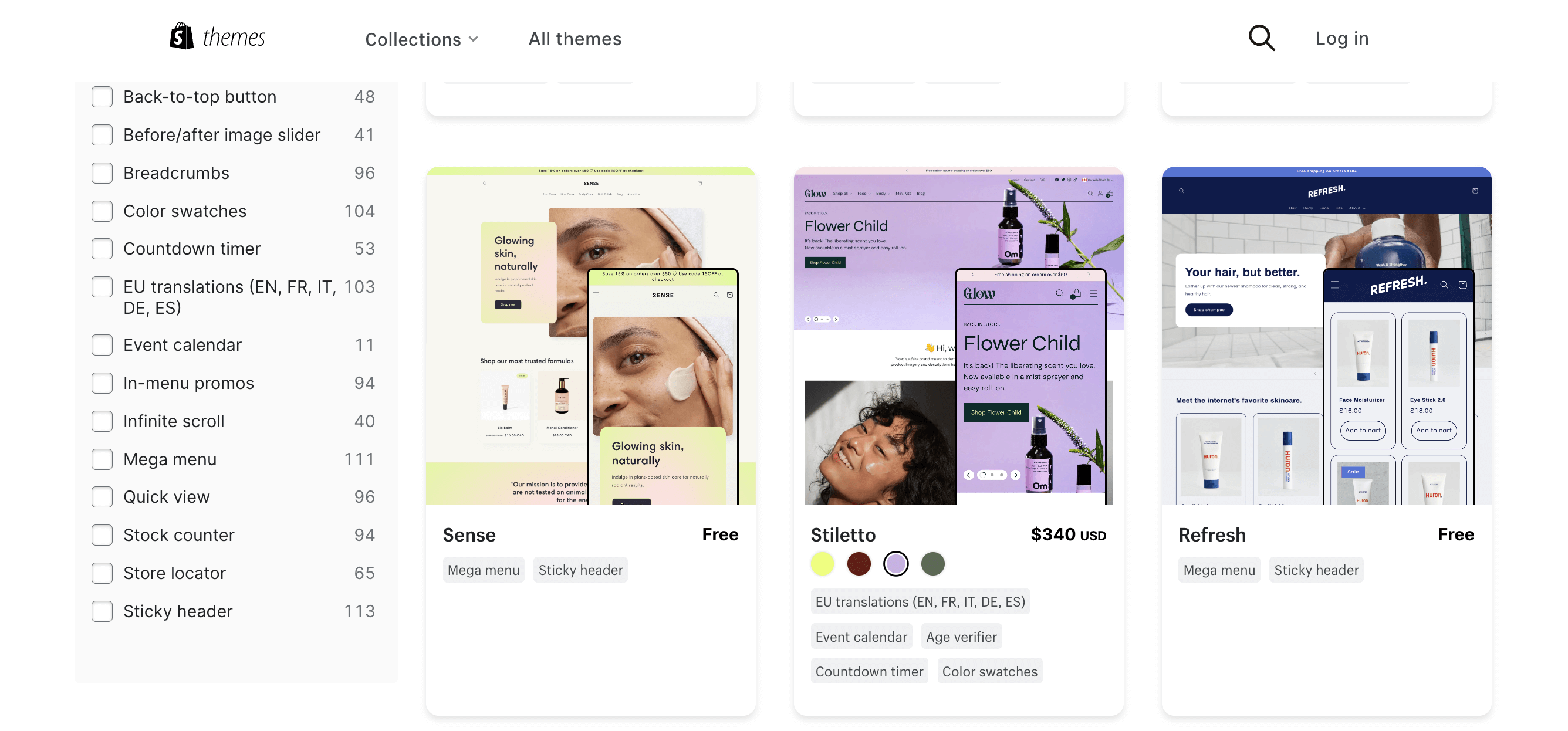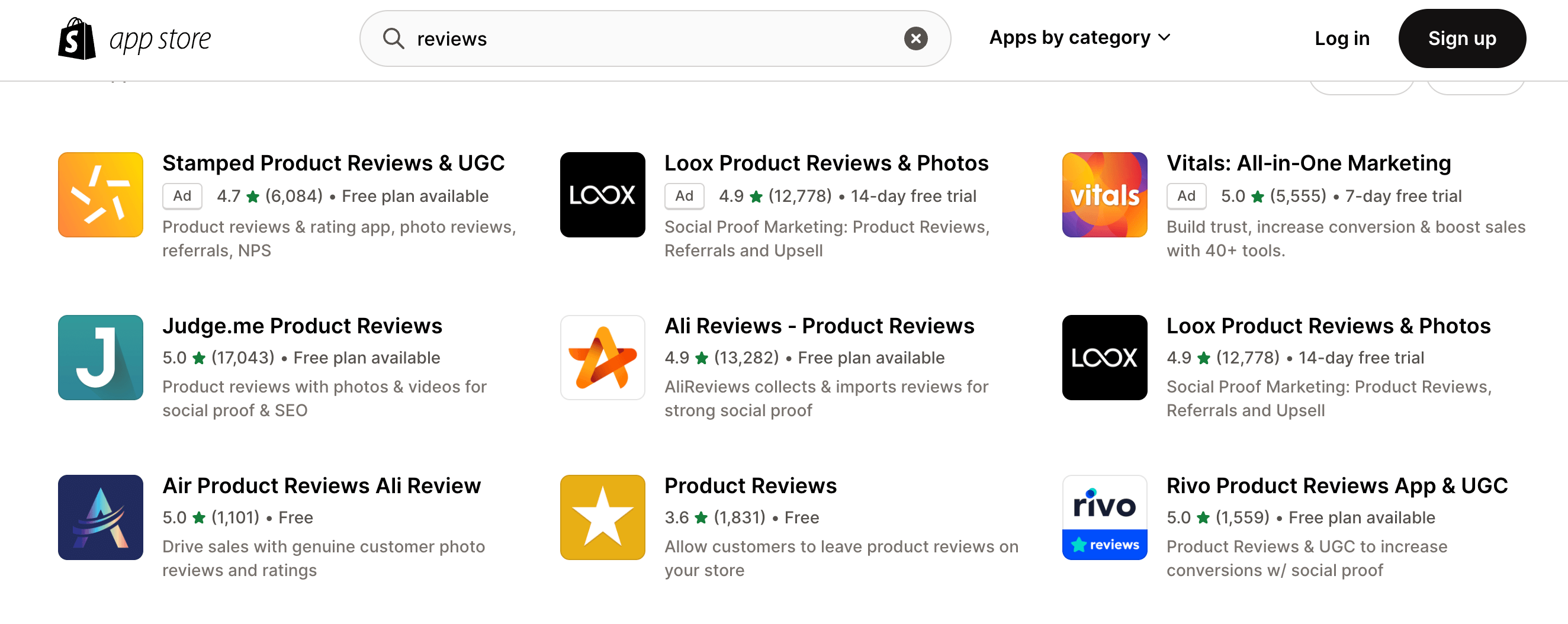Top Tips for Optimizing Your Shopify Health and Care Store for SEO Success 5 steps
 August 23, 2023
August 23, 2023 In today's digital age, having a strong online presence is crucial for businesses in all industries, including the health and care sector. Shopify has emerged as one of the leading e-commerce platforms, offering a user-friendly interface and a wide range of features tailored to meet the specific needs of health and care store owners. Whether you are selling health supplements, wellness products, or personal care items, optimizing your Shopify store for SEO success is essential to attract organic traffic and increase sales.
Importance of SEO for Shopify health and care stores
The global market for healthcare e-commerce is projected to experience substantial growth, increasing from $309.62 billion in 2022 to $366.94 billion in 2023, with a compounded annual growth rate (CAGR) of 18.5%. However, the ongoing Russia-Ukraine conflict has disrupted prospects for a swift global economic rebound from the COVID-19 pandemic, particularly in the short term. The war between these nations has resulted in economic sanctions on multiple countries, a surge in commodity prices, supply chain disturbances, and subsequent inflation across various markets worldwide.
Forecasts indicate that the healthcare e-commerce sector is anticipated to expand further, reaching $732.3 billion by 2027, with a CAGR of 18.9%. Healthcare e-commerce involves the online trading of healthcare products and services, facilitating the procurement of medical supplies and equipment by healthcare institutions like hospitals and clinics.
This form of e-commerce encompasses the buying and selling of medical devices and pharmaceuticals. It offers several benefits such as convenience, cost savings, an extensive product range, favorable return policies, customer reviews, and quality certifications.
In 2022, North America held the largest share in the healthcare e-commerce market, while Asia Pacific followed as the second-largest region.
The geographical regions covered in the healthcare e-commerce market analysis encompass Asia-Pacific, Western Europe, Eastern Europe, North America, South America, the Middle East, and Africa.
Key categories of healthcare e-commerce include pharmaceuticals and medical devices. Pharmaceuticals, commonly known as drugs, are substances used for prevention, diagnosis, treatment, or alleviation of symptoms related to diseases or abnormal conditions.
The applications within healthcare e-commerce encompass telemedicine, caregiving services, and medical consultations, which find utility in hospitals, clinics, and various other end-user settings.
The health and care industry has seen significant growth and adaptation within the realm of e-commerce. This industry encompasses a wide range of products and services related to health, wellness, fitness, personal care, and medical needs. Here's a more detailed overview of how the health and care industry operates within the e-commerce landscape:
- Types of Businesses:
- Health Supplements: Online stores offer a variety of dietary supplements, vitamins, minerals, and herbal products to cater to different health needs.
- Fitness Equipment: E-commerce platforms provide fitness enthusiasts with access to a range of exercise equipment, from basic yoga mats to complex home gym setups.
- Personal Care and Beauty Products: Skincare, haircare, and beauty products are popular online purchases, allowing customers to explore various options and brands.
- Medical Equipment and Devices: E-commerce provides a platform for selling medical devices, home health equipment, and mobility aids.
- Telehealth and Consultation Services: Some platforms connect healthcare professionals with patients for remote consultations, making healthcare more accessible.
- Challenges and Regulations:
- Legal and Regulatory Compliance: Businesses need to navigate regulations and compliance standards specific to health and wellness products. This includes adhering to labeling requirements, claims, and certifications.
- Data Security and Privacy: If dealing with personal health information, businesses must ensure compliance with data protection laws like HIPAA to safeguard patient privacy.
- Product Authenticity and Quality: Ensuring the quality and authenticity of health products is crucial to building trust with consumers.
- Digital Transformation:
- Virtual Try-On and Consultations: Some e-commerce platforms incorporate virtual try-on features for cosmetics or offer online consultations with experts.
- Personalized Recommendations: AI-driven algorithms provide personalized product recommendations based on individual health and wellness goals.
- Content Marketing:
- Educational Content: Businesses often provide educational content through blogs, videos, and infographics to inform customers about health benefits, proper usage, and lifestyle tips.
- Influencer Collaborations: Influencers and experts in the health and wellness field collaborate with brands to promote products and share insights.
- Customer Engagement:
- Community Building: Brands create online communities where customers can share their health journey, exchange advice, and connect with like-minded individuals.
- Reviews and Ratings: Customer reviews and ratings play a significant role in building trust and influencing purchasing decisions in this industry.
- Subscription Models:
- Subscription Boxes: Subscription-based models offer curated health and wellness products on a regular basis, allowing businesses to maintain a steady customer base.
- Mobile and App Integration:
- Health Tracking Apps: Many health-related e-commerce businesses integrate with mobile apps to track health data, offer workout plans, and provide nutritional guidance.
- Global Reach:
- Access to International Markets: E-commerce allows health and care businesses to expand their reach globally, enabling customers from different countries to access their products and services.
- Regimen and Routine Support:
- Automated Reordering: Some e-commerce platforms offer automatic reordering for products that are consumed regularly, such as vitamins or supplements.
- Responsive Customer Support:
- Live Chat and AI Assistants: E-commerce businesses often incorporate live chat and AI-driven customer support to assist customers with their queries.
- Returns and Refunds:
- Flexible Return Policies: Given the nature of health products, businesses often have specific return policies to address customer concerns related to effectiveness or allergies.
The health and care industry's presence in e-commerce continues to evolve, driven by advancements in technology, changing consumer preferences, and the need for accessible health and wellness solutions. Businesses operating in this industry must carefully consider the unique challenges and opportunities associated with selling health-related products and services online.
Search Engine Optimization (SEO) plays a critical role in driving organic traffic to your Shopify health and care store. When potential customers search for products or services related to health and care, you want your store to appear at the top of the search engine results page. By optimizing your store for relevant keywords and improving its overall visibility, you can increase your chances of attracting high-quality, targeted traffic.
Key factors for optimizing your Shopify health & care store
Customizing your Shopify health & wellness store. How to customize Shopify health & care store.
Customizing your Shopify health and care store is the first step towards optimizing it for SEO success. Start by choosing a visually appealing and user-friendly theme that aligns with your brand image and caters to the specific needs of your target audience. Ensure that your store's layout is clean and organized, making it easy for visitors to navigate and find the products they are looking for.
Next, focus on optimizing your product descriptions, titles, and meta tags. Use relevant keywords naturally throughout your store's content, but avoid keyword stuffing, as it can negatively impact your SEO efforts. Additionally, optimize your images by using descriptive alt tags and compressing them to improve page loading speed.
Choose a Shopify Theme for health & care store
Shopify health & care store templates. When it comes to choosing a Shopify theme for your health and care store, it's important to consider both aesthetics and functionality. Look for a theme that reflects the nature of your products and appeals to your target audience. Consider factors such as responsiveness, page loading speed, and ease of customization.
Moreover, ensure that the theme is optimized for SEO. Look for themes that have clean code, proper heading structure, and schema markup implementation. These features can significantly improve your store's visibility in search engine rankings, making it easier for potential customers to find you online.
Shopify health and care store templates:

Utilizing apps for your Shopify health and wellness store
Shopify offers a wide range of apps that can enhance the functionality and performance of your health and care store. From SEO optimization apps to marketing automation tools, these apps can help you streamline your operations and improve your store's visibility. Consider using apps that allow you to track your store's performance, optimize your product listings, and automate your marketing campaigns.

When choosing apps for your store, be mindful of your specific needs and goals. Research each app thoroughly, read user reviews, and consider consulting with Shopify experts to ensure that you are making the right choices for your health and care store.
Marketing strategies for your Shopify health & care store in USA
No matter how well-optimized your Shopify health and care store is, it won't generate sales without effective marketing strategies. Here are some key strategies to consider:
Marketing health & care Store. Content marketing
Invest in creating high-quality, informative, and engaging content related to health and care. This can include blog posts, articles, videos, and infographics. Focus on addressing the pain points and needs of your target audience, and incorporate relevant keywords naturally in your content. By providing valuable information, you can establish yourself as an authority in the industry and attract organic traffic to your store.
Social media marketing
Leverage the power of social media platforms to promote your health and care store. Create compelling content that resonates with your target audience and share it on platforms like Facebook, Instagram, and Twitter. Engage with your followers, respond to their comments and questions, and run targeted ad campaigns to increase brand awareness and drive traffic to your Shopify store.
Influencer marketing
Collaborate with influencers in the health and care industry to promote your products. Look for influencers who align with your brand values and have a large, engaged following. This can help you reach a wider audience and build trust with potential customers. Consider offering influencers free products or commission-based partnerships to incentivize them to promote your store.
Top Shopify apps for health & care stores
Health & care Shopify
Shopify offers a wide range of apps specifically designed for health and care stores. Here are some top apps to consider:
SEO Manager
SEO Manager is a powerful app that helps you optimize your store for search engines. It allows you to edit meta tags, alt tags, and headings, generate XML sitemaps, and analyze your store's performance.
Mailchimp
Mailchimp is a popular email marketing app that allows you to create and automate email campaigns. It offers various templates and segmentation options, making it easy to engage with your customers and drive sales.
Privy
Privy is a conversion optimization tool that helps you capture leads and increase sales. It offers features such as exit-intent popups, spin-to-win wheels, and cart abandonment emails.
Best practices for SEO in the health & care industry
The health and care industry is highly competitive and sensitive, so implementing effective SEO (Search Engine Optimization) strategies is crucial for online visibility and credibility. Here are some best practices tailored for the health and care industry:
- Quality Content Creation:
- Develop informative, accurate, and well-researched content that addresses common health concerns, provides valuable information, and educates your audience.
- Use a mix of formats like articles, blog posts, infographics, videos, and interactive tools to engage users.
Keyword Research:
- Identify relevant and high-intent keywords related to your services, treatments, and healthcare topics.
- Use keyword research tools to find popular and low-competition keywords that your target audience is searching for.
Medical Expertise and Authority:
- Establish your authority by demonstrating medical expertise. Provide citations, references, and link to reputable medical sources.
- Include author credentials and credentials of contributing medical professionals to build trust.
User Experience (UX):
- Ensure your website is mobile-responsive and loads quickly to provide a positive user experience.
- Create an intuitive navigation structure and organize content into categories to help users find information easily.
Local SEO:
- Optimize for local search by including location-specific keywords and ensuring your business information (NAP: Name, Address, Phone) is consistent across online directories and platforms.
- Encourage reviews and ratings from satisfied patients on Google My Business and other relevant platforms.
Technical SEO:
- Optimize your website's technical aspects, such as improving site speed, optimizing images, implementing schema markup for healthcare information, and using SSL certificates for secure browsing.
Link Building:
- Build high-quality and relevant backlinks from reputable medical websites, healthcare organizations, and authoritative sources.
- Guest posting on relevant healthcare blogs and collaborating with medical influencers can help in earning quality backlinks.
Secure and Private Website:
- Given the sensitivity of health information, ensure your website is secure using HTTPS and follows HIPAA compliance guidelines if applicable.
- Highlight your commitment to patient privacy and data security.
Social Media and Content Distribution:
- Share your content on social media platforms frequented by your target audience, such as health forums, patient communities, and relevant groups.
- Engage with users, answer questions, and provide value through your social media channels.
Regular Updates and Maintenance:
- Keep your content up to date, especially when there are changes in medical guidelines, treatments, or health information.
- Regularly monitor your website's performance using analytics tools to identify opportunities for improvement.
Mobile Optimization:
- Ensure your website is mobile-friendly and provides a seamless experience on different devices and screen sizes.
Local Directories and Listings:
- Get listed on local healthcare directories, medical association websites, and healthcare-related platforms to increase your online visibility.
Remember that SEO is an ongoing effort, and it's important to stay updated with the latest search engine algorithms and trends in the health and care industry. Always prioritize the needs and interests of your target audience while providing accurate and valuable information.
Optimizing your Shopify health and care store for SEO success requires implementing industry-specific best practices. Here are some tips to keep in mind:
Conduct keyword research
Identify relevant keywords that your target audience is likely to search for. Use tools like Google Keyword Planner and SEMrush to find high-volume, low-competition keywords that you can incorporate into your store's content.
Optimize product descriptions
Write unique and compelling product descriptions that highlight the benefits and features of your health and care products. Incorporate relevant keywords naturally, but avoid keyword stuffing.
Leverage customer reviews
Encourage your customers to leave reviews and ratings for your products. Positive reviews can significantly improve your store's credibility and visibility in search engine rankings.

Example: OrthoCare Clinic - Optimizing SEO for Orthopedic Services
1. Quality Content Creation:
- Develop a series of articles and videos that cover common orthopedic issues like "Managing Knee Pain: Exercises and Tips" or "Understanding Different Types of Fractures."
- Create an infographic showcasing the steps for post-surgery rehabilitation after a joint replacement.
2. Keyword Research:
- Research keywords like "best orthopedic clinic in [location]," "knee pain treatment options," and "hip replacement surgery recovery."
- Identify long-tail keywords like "exercises for rotator cuff injury recovery" to target specific user queries.
3. Medical Expertise and Authority:
- Feature profiles of the clinic's orthopedic surgeons, including their qualifications, specialties, and years of experience.
- Provide references and citations for medical information and treatment options discussed on the website.
4. User Experience (UX):
- Optimize the website for mobile devices, ensuring that patients can easily access information and schedule appointments from their smartphones.
- Categorize services and treatments, allowing users to quickly find information relevant to their needs.
5. Local SEO:
- Optimize the Google My Business listing with accurate clinic information, high-quality images, and patient reviews.
- Include location-specific keywords like the city or neighborhood where the clinic is located.
6. Technical SEO:
- Improve website loading speed by compressing images and optimizing code.
- Implement schema markup to highlight clinic details, services, and patient reviews for search engines.
7. Link Building:
- Collaborate with local health-related organizations to host joint webinars or workshops on orthopedic health, earning backlinks and demonstrating expertise.
- Contribute guest posts to reputable medical blogs with relevant orthopedic topics.
8. Secure and Private Website:
- Highlight the clinic's commitment to patient privacy and data security through a dedicated section on the website.
- Ensure the website is encrypted with an SSL certificate for secure browsing.
9. Social Media and Content Distribution:
- Share patient success stories, educational videos, and health tips on social media platforms like Facebook, Instagram, and YouTube.
- Engage with followers by responding to comments and questions promptly.
10. Regular Updates and Maintenance:
- Keep the website's treatment information and post-operative guidelines up to date as medical practices evolve.
- Use tools like Google Analytics to monitor the performance of specific pages and identify areas for improvement.
Remember that each website's needs and goals may vary, so it's important to tailor your SEO strategy to your specific target audience, services, and geographic location.
Conclusion and final tips for success
Optimizing your Shopify health and care store for SEO success is a continuous process that requires ongoing effort and monitoring. By customizing your store, choosing the right theme, utilizing apps, and implementing effective marketing strategies, you can increase your store's visibility, attract organic traffic, and drive sales.
If you're looking to expand your eCommerce business, we invite you to initiate a conversation with Mgroup. Their team of experts can provide valuable insights and guidance to help you take your Shopify health and care store to the next level of success. Don't miss out on the opportunity to maximize your store's potential and reach new heights in the health and care industry.








